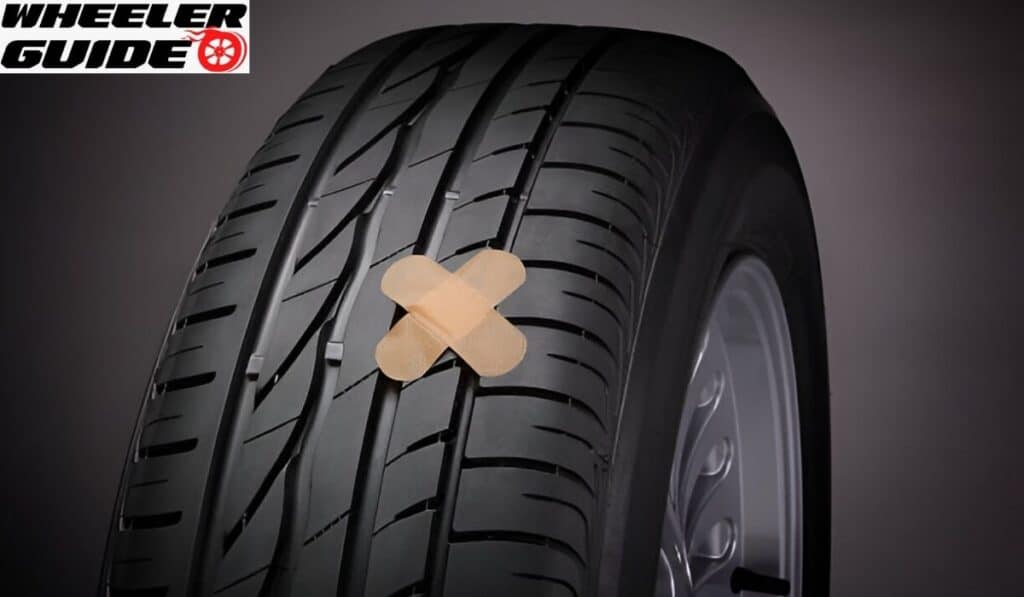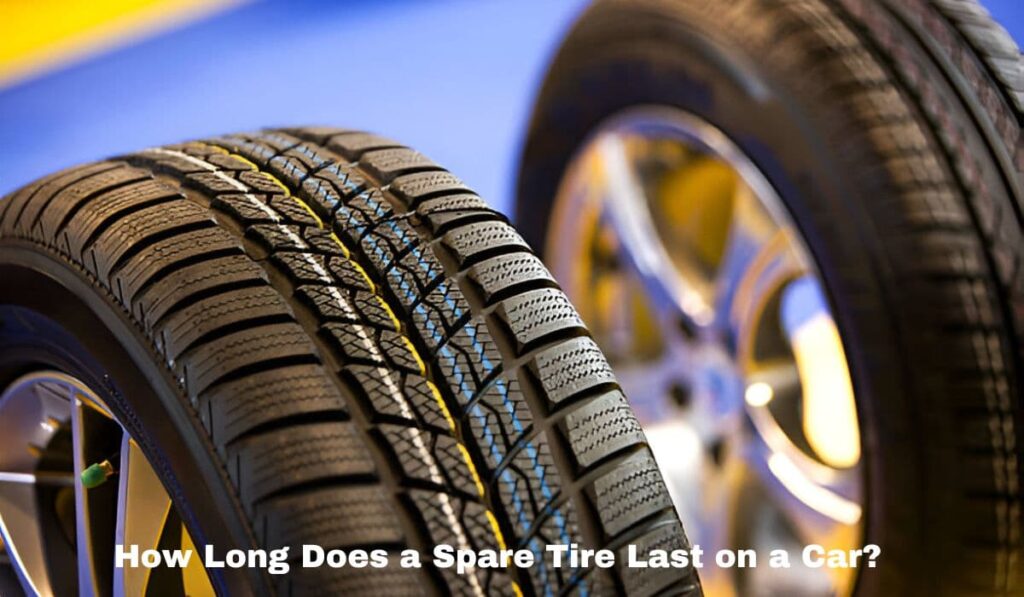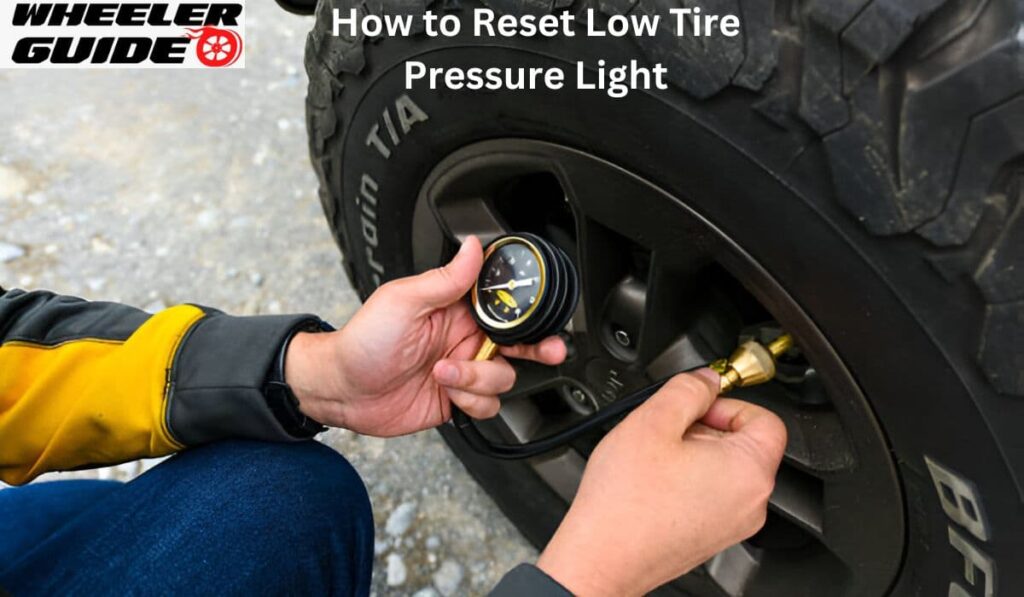Dealing with a flat tire can be frustrating, but knowing how to patch it quickly can get you back on the road. Patching a car tire typically takes between 30 minutes to an hour for most people. This time can vary based on experience and the tools available.
Repairing a tire involves several steps. These include finding the leak, removing the tire, cleaning the puncture area, applying the patch, and refitting the tire. The process requires some basic tools and careful attention to detail. While it may seem daunting at first, learning how to patch a car tire can save time and money in the long run. It’s a useful skill for any driver to have, especially when faced with unexpected flat tires or small punctures.
Understanding Tire Damage and Repair Limitations
Tire damage comes in many forms, each with its repair requirements. Safety is key when deciding between patching and replacing a damaged tire. Proper assessment ensures the best course of action.
Types of Tire Damage
Punctures are common tire injuries. Small holes from nails or screws in the tread area can often be repaired with a patch. Cuts or gashes in the tire may be too large to fix safely.
Sidewall damage is serious. Cracks, bulges, or cuts here usually mean the tire needs replacement. The sidewall bears the weight of the vehicle and flexes during driving. Treadwear is another form of damage. As tires lose tread depth, they become less safe and may need replacement.
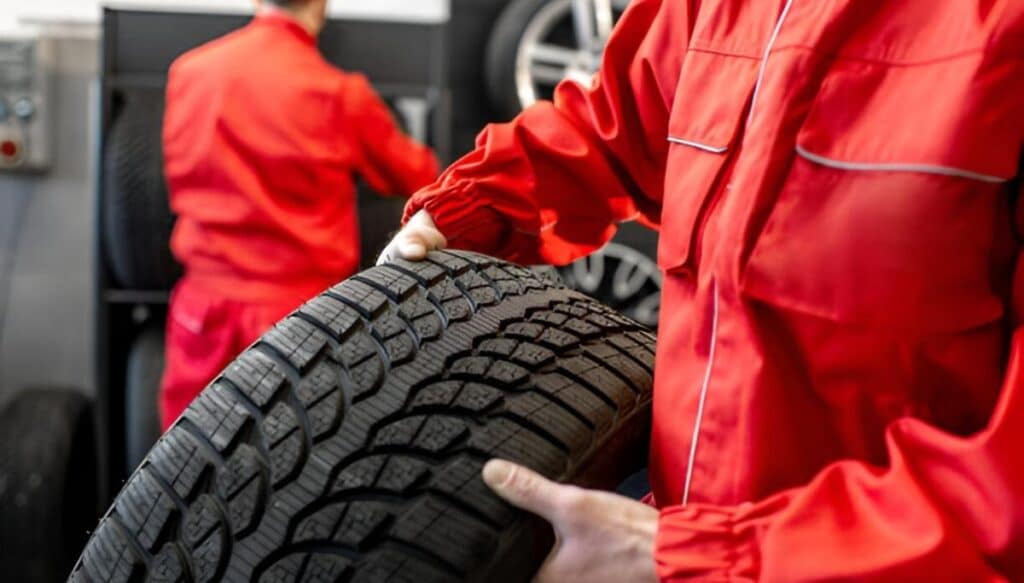
When to Replace vs. When to Repair
Small punctures in the tread area, less than 1/4 inch wide, are often repairable. The damage location matters. Repairs are typically safe if they’re in the center tread area.
Tires need replacement when:
- The damage is in the sidewall
- The puncture is larger than 1/4 inch
- There are multiple punctures close together
- The tire is old or worn out
It’s important to note that some high-performance or run-flat tires may have different repair guidelines.
Evaluating Repair Safety
Safety should be the top priority when deciding on tire repair. A professional inspection is crucial to determine if a repair is safe.
Technicians look at:
- The size of the damage
- Its location on the tire
- The overall condition of the tire
Proper repairs involve both a plug and a patch. This method seals the tire from the inside and outside. Plug-only repairs are less reliable and may not last as long.
After repair, the tire should be balanced and properly inflated. Drivers should monitor the repaired tire for any signs of air loss or further damage.
Preparing for Tire Repair
Getting ready to patch a tire involves a few key steps. These ensure you can access and fix the damaged area properly.
Locating the Puncture Area
Finding the exact spot of the leak is crucial. Look for any visible nails or screws in the tire tread. If nothing is obvious, inflate the tire and spray soapy water over it. Bubbles will form where air is escaping.
Mark the puncture clearly with chalk. This helps you find it again later. For slow leaks, submerge the tire in water. Air bubbles will reveal the leak’s location. Never try to patch damage on the tire’s sidewall. This area flexes too much and can’t be safely repaired.
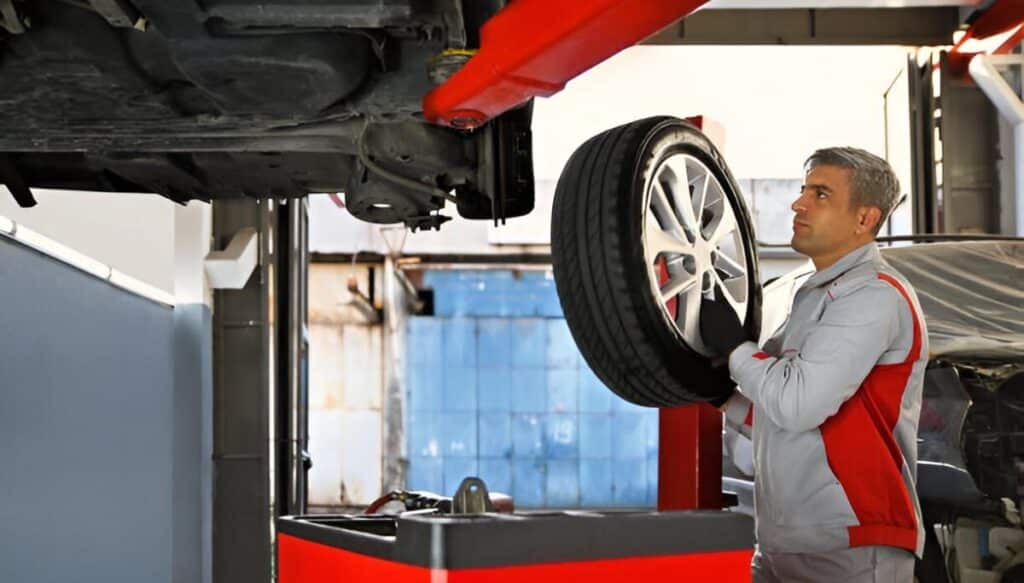
Removing the Tire
Removing the tire from the rim is essential for a proper repair. Start by deflating the tire completely. Use a tire iron to break the bead seal between the tire and the rim.
Place the wheel flat on the ground. Step on the sidewall close to the rim to separate them. Use tire levers to pry the tire over the rim edge. Work your way around until one side is free.
Flip the wheel and repeat for the other side. The tire should now come off the rim easily. Clean the inner surface of the tire, focusing on the puncture area. This helps the patch stick better.
The Tire Patching Process
Patching a car tire involves specific steps and tools. The process can be done with or without a patch kit, depending on the situation and available resources.
Patching Techniques
To patch a tire, first remove it from the wheel. Clean the punctured area with soap and water. Roughen the inner surface with a buffer tool. Apply rubber cement to the area and let it dry slightly.
Next, place the patch over the hole and press firmly. Use a roller to remove air bubbles. Let the patch dry completely before reinflating the tire.
For larger holes, a plug-patch combo works best. Insert the plug through the hole from the outside. Then apply the patch on the inside for a strong seal.
Sealing with or Without a Patch Kit
A patch kit is the best option for a proper tire repair. It includes patches, cement, and tools needed for the job. Without a kit, temporary fixes are possible but not recommended for long-term use.
In emergencies, tire plugs can seal small punctures quickly. Insert the plug into the hole and trim the excess. This method works well for tread punctures but not sidewall damage.
Some drivers attempt to use super glue or Gorilla Glue as a quick fix. While this might work briefly, it’s not safe or reliable. Professional repair is always the best choice for a lasting and safe solution.
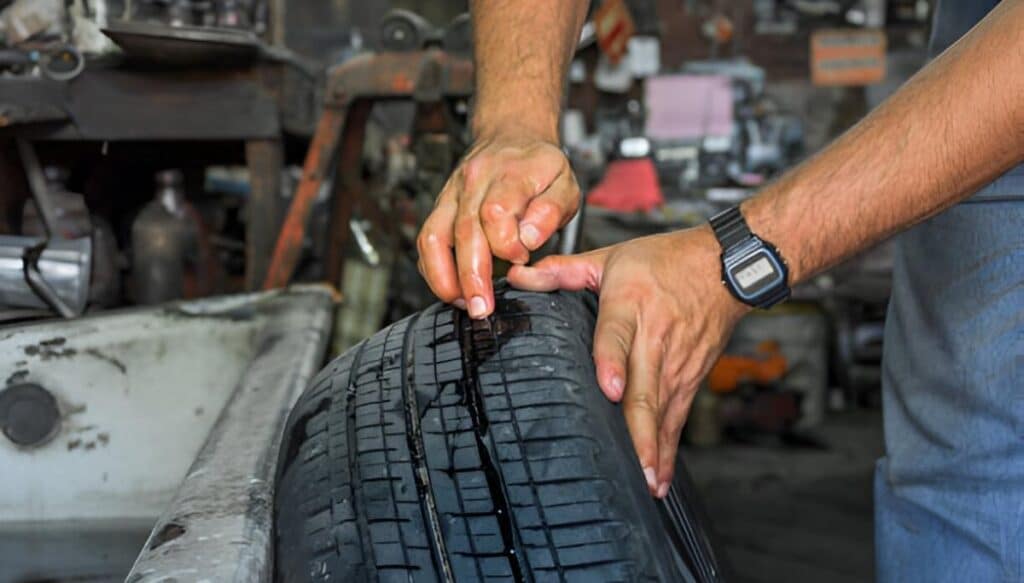
Post-Repair Considerations
After patching a tire, it’s crucial to assess the repair and plan for future maintenance. These steps help ensure safety and extend the life of the repaired tire.
Assessing the Repair
Check the patch job carefully before driving. Look for any signs of air leakage or improper sealing. A correctly applied patch should be flat against the tire’s inner surface with no visible gaps.
Test the tire pressure after repair. If it holds air for 24 hours, the patch is likely secure. It’s important to note that repairs to the tire’s sidewall are not safe or recommended.
Drive at moderate speeds for the first few miles. Listen for unusual noises and feel for vibrations. These could indicate a problem with the repair.

Future Maintenance
Monitor the patched area regularly. Look for signs of wear, separation, or further damage. A properly installed patch can last for the remaining life of the tire, but ongoing checks are essential. Keep the tire properly inflated. This helps distribute weight evenly and reduces stress on the patched area.
Rotate tires as recommended by the vehicle manufacturer. This promotes even wear and can help extend the life of the repair. Consider replacing the tire if multiple repairs are needed. Too many patches can compromise the tire’s integrity and safety.
Time and Cost Factors
Patching a car tire involves several variables that affect both the time and expense. The process can be quick and affordable, but repair duration and costs may change based on specific circumstances.
Average Repair Duration
Most tire patches take about 30 minutes to complete. This includes removing the tire, finding the leak, preparing the tire surface, applying the patch, and remounting the tire.
Simple punctures in the tread area are usually the fastest to fix. More complex repairs, like those near the sidewall, may take longer.
Some factors can extend the repair time:
- Busy repair shops
- Multiple punctures
- Hard-to-find leaks
- Tire removal difficulties
Cost of Patching a Tire
The price to patch a tire is often between $10 and $20 for basic repairs. This makes it a budget-friendly option compared to buying a new tire.
Costs can go up for more complex repairs. Some shops charge $20 to $50 for trickier fixes.
Pricing may include:
- Labor
- Materials
- Tire inspection
- Balancing (sometimes extra)
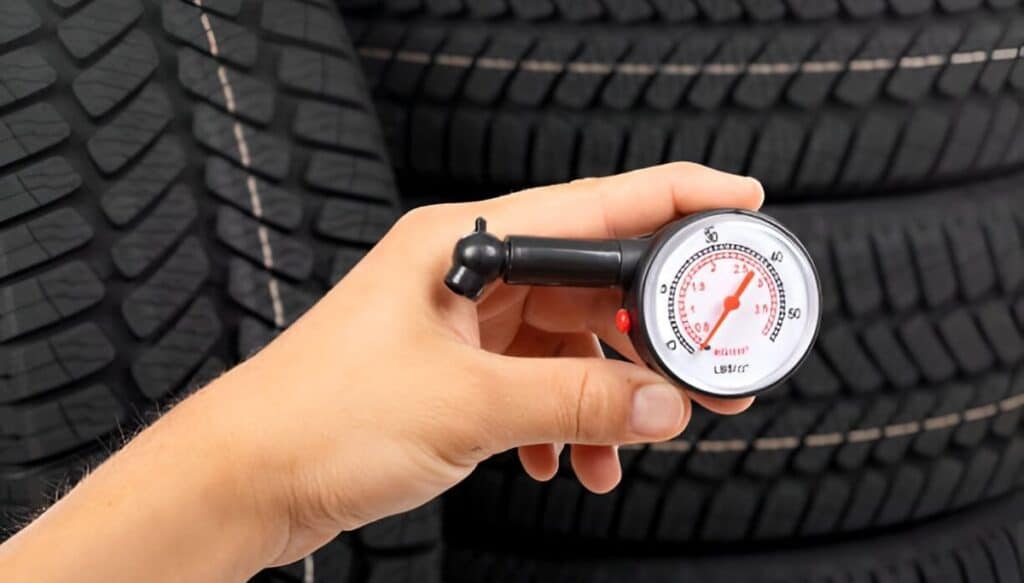
Factors Influencing Repair Cost and Time
Several elements can affect how long a tire patch takes and how much it costs:
- Location of the puncture
- Size of the hole
- Type of tire
- Shop’s workload
- Tire’s overall condition
Repairs on high-end or specialty tires might cost more. Rush jobs could also increase the price. The repair shop’s experience and equipment quality play a role too. Well-equipped shops with skilled staff may work faster but might charge higher rates.
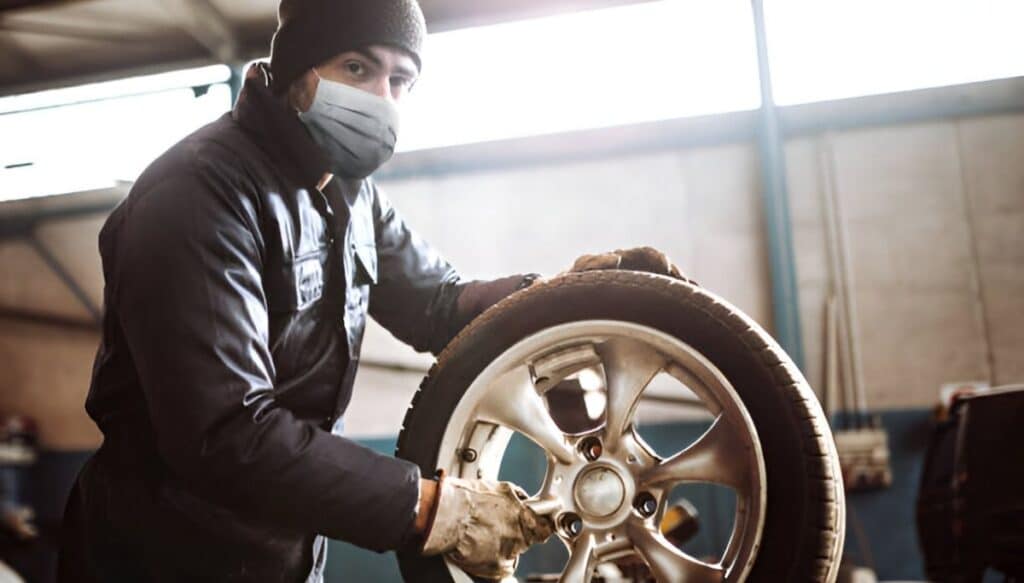
Tire Maintenance and Prevention
Taking care of your tires is key to safe driving and avoiding flats. Good habits can make your tires last longer and perform better.
Regular Inspections
Check your tires often for signs of wear or damage. Look at the tread depth using a penny or tread gauge. If the tread is too low, it’s time for new tires.
Watch for uneven wear, which can mean your wheels need alignment. Feel for bulges or blisters on the sidewalls. These weak spots can lead to blowouts.
Check tire pressure monthly when tires are cold. Use the pressure listed in your car manual or door jamb, not the number on the tire. Proper pressure helps tires wear evenly and improves gas mileage.
Preventive Measures
Rotate your tires every 5,000 to 8,000 miles. This helps them wear evenly and last longer. The rotation pattern depends on your car and tire type.
Balance your tires when you notice vibration while driving. This prevents uneven wear and extends tire life.
Avoid potholes and curbs when possible. These can damage your tires or knock your wheels out of alignment. Don’t overload your vehicle. Too much weight strains tires and can cause flats or blowouts.
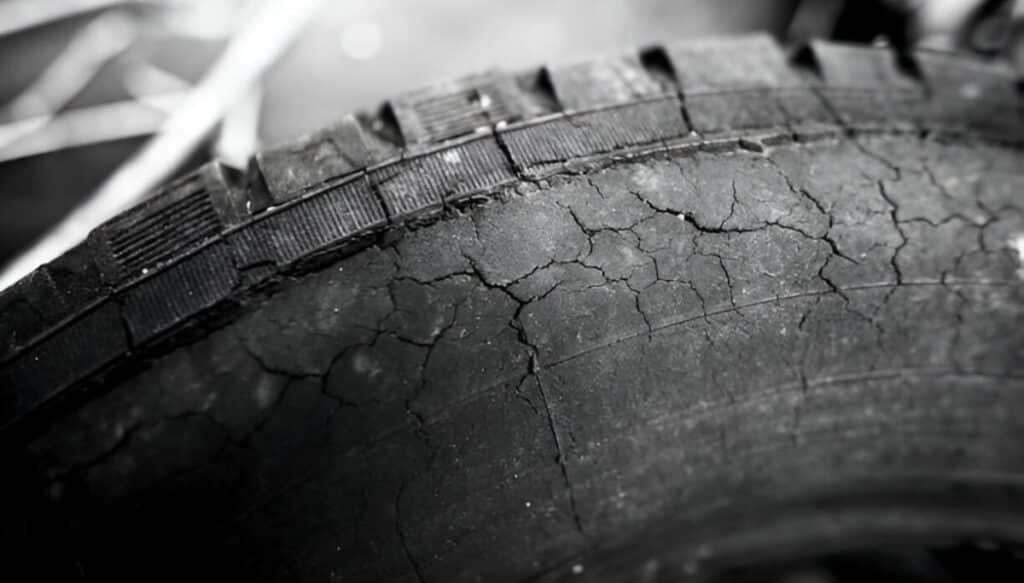
Understanding Tire Lifespan
Most tires last 3 to 5 years with normal use. But many factors affect tire life:
- Driving habits
- Road conditions
- Climate
- Tire quality
Tubeless tires are common in modern cars. They can often be repaired if punctured, unlike older tube-type tires.
Replace your tires when the tread depth reaches 2/32 of an inch. Many tires have built-in tread wear indicators to show when it’s time. Even if the tread looks good, replace tires that are over 6 years old. The rubber can degrade over time, making them unsafe.
Frequently Asked Questions
How much time is required to repair a tire punctured by a nail?
Patching a tire punctured by a nail typically takes 15-30 minutes. This includes removing the tire, locating the puncture, cleaning the area, and applying the patch.
Professional mechanics may complete the process faster due to their experience and specialized tools.
Is a tire plug a durable solution for tire repair?
Tire plugs can be a quick fix but are not as durable as patches. They can last up to 25,000 miles in some cases.
For better durability, a combination of a plug and patch is recommended. This method provides both internal and external protection for the damaged area.
What is the longevity of a patched tire for long-distance journeys?
A properly patched tire can last for the remaining life of the tire if the repair is done correctly. This assumes the damage was within repairable limits and the tire had sufficient tread depth.
Regular inspections are crucial to ensure the patch remains secure during long-distance travel.
After patching a tire, can you drive the vehicle immediately?
It’s generally safe to drive immediately after a tire is patched. The repair adhesive sets quickly, allowing for immediate use.
However, it’s wise to drive cautiously for the first few miles to ensure the patch holds and there are no air leaks.
Does patching a tire serve as a permanent repair method?
Tire patching can be a permanent repair if done correctly and the damage meets specific criteria. The puncture should not exceed 1/4 inch (6mm) in diameter.
Patches work best for damage in the tire’s tread area. Sidewall damage usually requires tire replacement.
How long should one wait before driving after plugging a tire?
After plugging a tire, it’s recommended to wait about 10 minutes before driving. This allows the plug to set properly in the tire.
For added safety, drive at moderate speeds for the first few miles and monitor the tire pressure.
